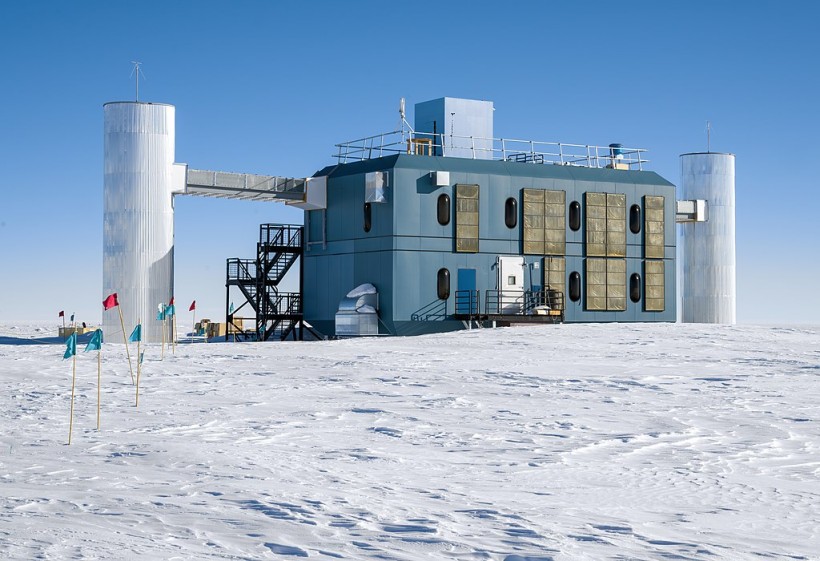About one trillion neutrinos pass through every person every second. Formed during the Big Bang, these "relic" particles are present throughout the cosmos but cannot cause any harm. In fact, only one of these particles can lightly tap an atom in our bodies in our lifetime.

(Photo: Wikimedia Commons/ Cmichel67)
Most neutrinos created by cosmic objects like black holes have more energy than the relic neutrinos that float through space. Although they are much rarer, they are more likely to crash into something and make a signal that physicists can detect. However, scientists would need to set up extensive experiments to detect them.
Flavors of Neutrino
Neutrinos exist in various types, called flavors, which leave a sharp imprint on a detector. When a neutrino collides with another particle, it usually produces a charged particle that corresponds with its flavor. An electron neutrino produces an electron, a muon neutrino produces a muon, and a tau neutrino produces a tau.
Neutrinos with a muon flavor possess the most distinctive feature. The muon produced from a muon neutrino collision travels through hundreds of meters of ice, creating a long track of detectable light before decaying. This allows the researchers to trace the origin of this particle. For electron neutrinos, their interactions form a roughly spherical ball of light. This leaves an expanding ball of light before the electron comes to rest.
Meanwhile, tau neutrino is considered the chameleon of the three flavors. One tau neutrino can exist as a track of light, while the next can look like a ball. The third neutrino flavor created in the collision travels for a small fraction of a second before decaying, protruding a ball of light when it does.
READ ALSO: Does Quantum Gravity Exist? IceCube Mission Search for Neutrino Decoherence at the South Pole
Observation of Tau Neutrino Candidates
In a recent experiment, experts at IceCube Neutrino Observatory conducted a rare type of particularly energetic astrophysical neutrino. This facility, located at the Amundsen-Scott South Pole Station in Antarctica, is home to around 5,000 sensors that have intently peered at a gigaton of ice under the South Pole for almost 10 years. It has detected neutrinos formed in various places, like the Earth's atmosphere, the heart of the Milky Way galaxy, and black holes found in other galaxies.
Neutrinos usually pretend to be more common types of neutrinos. Because of this, a particularly energetic neutrino called the tau neutrino has eluded IceCube experts.
For the first time, R. Abbasi and colleagues detected them by pulling out a few from almost a decade of scientific data. The result of their experiment puts scientists one step closer to unlocking the mystery of how highly energetic particles such as astrophysical neutrinos are produced. The details of their study were described in the paper "Observation of Seven Astrophysical Tau Neutrino Candidates with IceCube."
Using computational tools, the research team extracted seven astrophysical tau neutrino candidates from a decade of data. These tags had energies even higher than those of the most powerful particle accelerators on Earth, indicating that they come from astrophysical sources, like black holes.
This study's data confirm IceCube's earlier discovery of astrophysical neutrinos and verify a hint that IceCube researchers previously picked up astrophysical tau neutrinos. The results suggest that even at vast distances and highest energies, neutrinos behave much the same way at lower energy levels.
RELATED ARTICLE: Proposed Neutrino Observatory in Space Is Better Than Earth as It Captures Sun Core's Neutrino and Other Solar Flare Activity
Check out more news and information on Neutrinos in Science Times.














